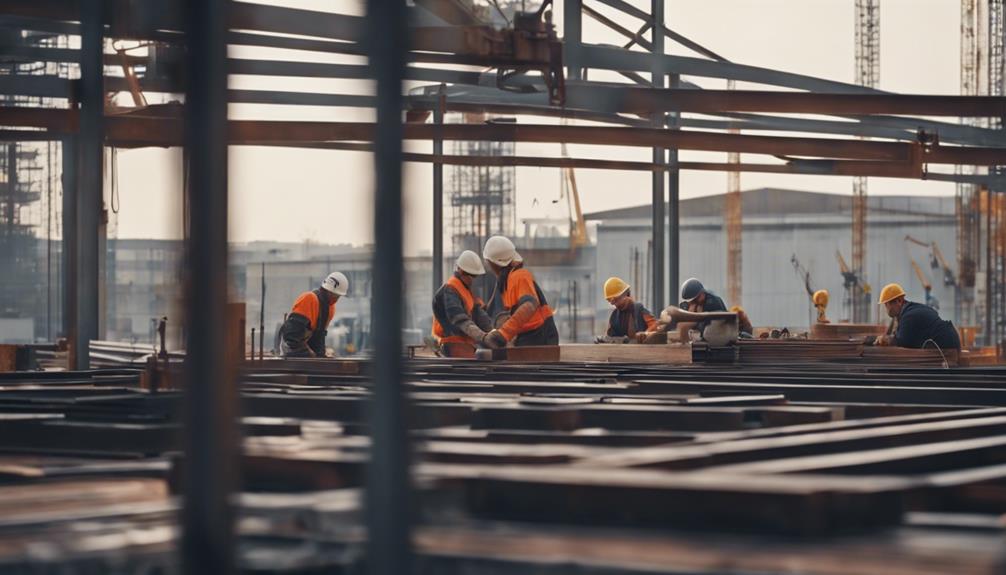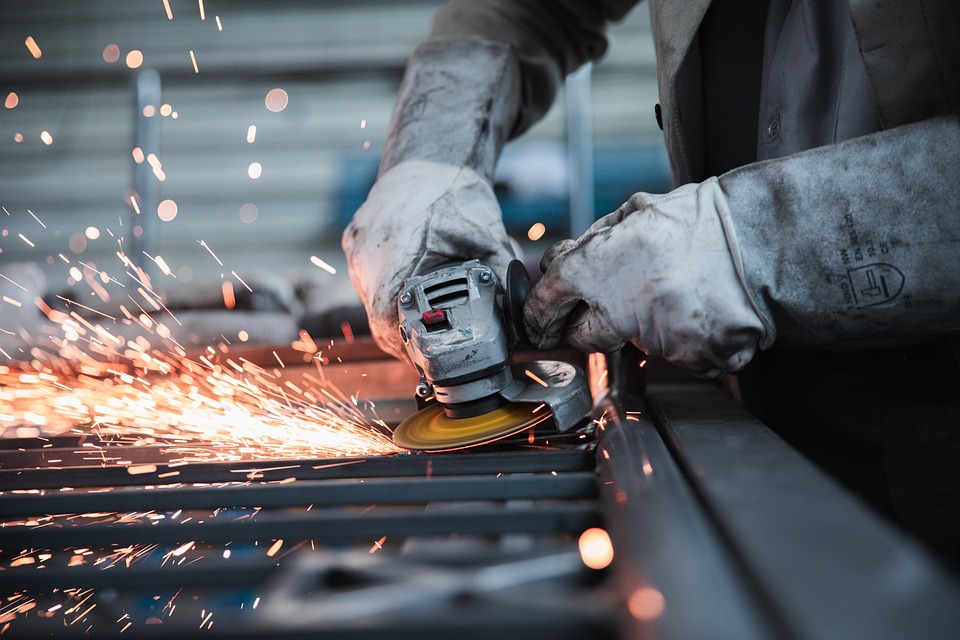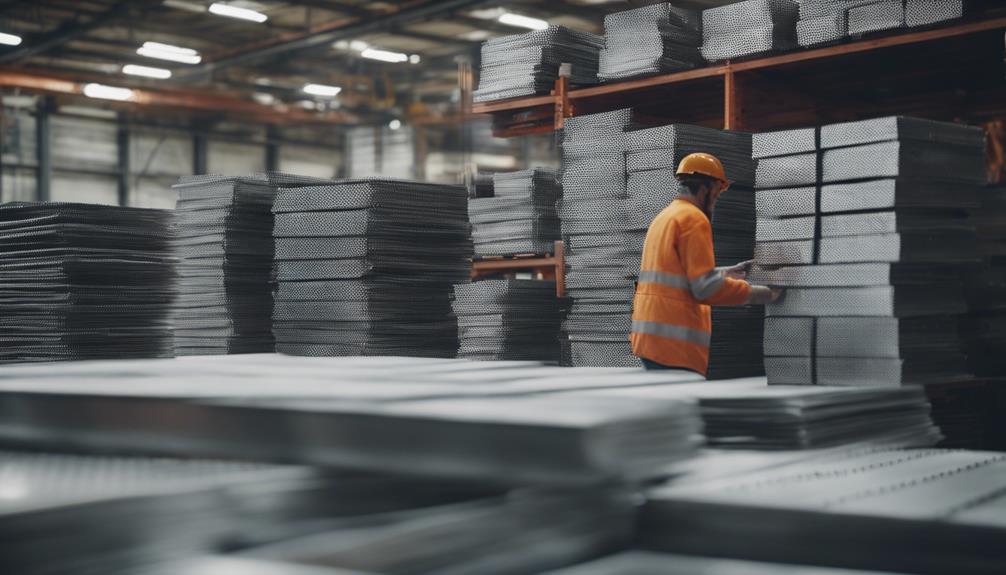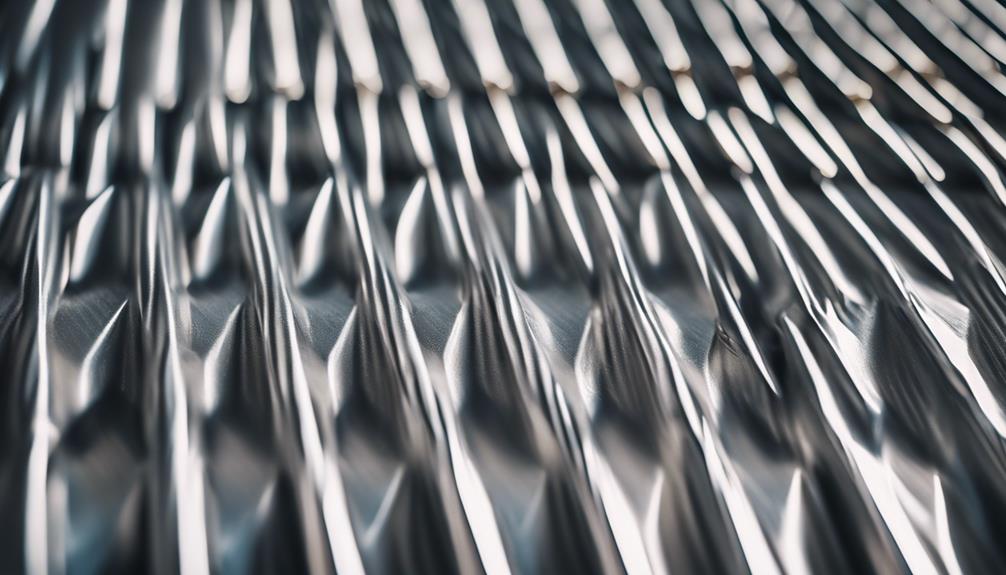Steel decking is a versatile and cost-efficient construction material known for its exceptional strength and fire resistance, enhancing stability and load-bearing capacity in structures. With quick installation processes to expedite construction timelines, steel decking offers benefits such as high performance and durability. Understanding the types, gauges, finishes, and installation methods play an important role in maximizing the potential of steel decking in construction projects.
Key Takeaways
- Steel decking enhances stability and load-bearing capacity of structures.
- Different types cater to various construction project requirements.
- Proper gauge selection is crucial for load capacities and span capabilities.
- Finishes like galvanized coatings and powder coatings improve durability.
- Efficient installation and regular maintenance contribute to steel deck longevity.
Benefits of Steel Decking
Recognized for its high performance and cost efficiency, steel decking stands out as a preferred choice in construction projects. Steel deck panels offer exceptional strength and stiffness, making them a reliable option for supporting structural concrete and composite floor decks. The bond with the concrete enhances the overall stability and load-bearing capacity of the structure. Additionally, steel decking provides excellent fire resistance, ensuring the safety and longevity of buildings. Steel roof decks are also commonly used due to their durability and weather-resistant properties. With quick installation processes, steel decking helps expedite construction timelines, making it a practical and efficient choice for commercial designs.
Types of Steel Deck
Steel decking comes in various types, each tailored to provide specific structural support and functionality in commercial construction projects. Metal decking, including floor decking and roof decking, supports concrete slabs and roofs with embossments for bonding during curing. Steel form decking is essential for stabilizing concrete slabs during construction. The Punchlok II system enhances structural performance by offering higher diaphragm shear values. Additionally, dovetail decking serves both structural and aesthetic purposes, providing versatility for different project requirements. These variations in steel deck design cater to the diverse needs of construction projects, ensuring the strength and stability required for supporting concrete slabs, roofs, walls, and gates in commercial settings.
Gauges and Thicknesses
Choosing the appropriate gauge and thickness of metal decking is a critical factor in ensuring structural integrity and support for various construction loads. Steel deck gauges typically range from 22 to 16, with lower numbers indicating thicker steel and higher structural integrity. Thicker gauges like 16 are commonly used for heavier loads and longer spans, while lighter gauges such as 22 are suitable for lighter loads. Proper gauge selection is essential to meet load capacities and span capabilities, ensuring the deck can support the intended application. While thinner gauges can reduce material costs, they may compromise strength for certain projects. Understanding the relationship between gauges, load capacities, and span capabilities is key to selecting the right steel decking for the best structural performance.
Finishes and Coatings
Properly selected finishes and coatings play an essential role in enhancing the durability and corrosion resistance of metal decking, ensuring longevity and structural integrity. Galvanized metal decking, for instance, features a zinc coating that serves as a protective barrier against environmental factors, preventing corrosion. Different finishes like powder coating are commonly applied to steel decking, offering a durable and aesthetically pleasing surface. Additionally, coatings such as epoxy and polyurethane can be utilized to provide further protection against wear and tear, increasing the overall lifespan of the structure. By choosing the right finishes and coatings for steel decking, the longevity and durability of the construction can be significantly boosted, ultimately enhancing its performance and appearance.
Installation of Steel Deck
Efficiently laying out metal deck panels in a predetermined pattern is a fundamental aspect of the installation process for steel decking. Fastening the steel deck panels securely to the structural steel framing is vital for stability and proper load distribution. Welding and aligning the panels accurately guarantees a smooth surface for subsequent construction layers. Safety measures must be strictly followed during the installation of steel decking to prevent accidents and uphold structural integrity. This step is essential in the construction process as it sets the foundation for the rest of the building components. By adhering to industry standards and guidelines, the installation of steel decking can proceed smoothly and establish a strong and safe structural framework.
Maintenance and Longevity
Ensuring consistent upkeep and inspection of steel decking is essential for maximizing its longevity and preserving structural integrity. Regular maintenance, including cleaning and inspection, can help prevent issues such as wear, damage, or rust, which may compromise the material properties of the steel. Properly coated steel decking, especially galvanized steel or composite materials, can resist corrosion and extend the lifespan of the structure. Routine inspections should focus on areas like mechanical embossments, deck profiles, and roof decking to identify any signs of deterioration. Applying protective coatings or sealants following manufacturer guidelines can further enhance the durability and resistance of the steel decking against environmental factors, ultimately contributing to its longevity.
Frequently Asked Questions
Is a Metal Deck Cheaper Than Wood?
Yes, metal decking is generally cheaper than wood in the long run due to its durability and lower maintenance costs. Metal decks offer higher strength-to-weight ratios, resistance to rot and pests, and customization options that can lead to cost savings.
Is Steel Deck Cheaper?
When evaluating cost, factors like material durability, maintenance, and longevity are essential. Consideration of these aspects can determine the economic viability of a product in the long run.
What Is Steel Decking Used For?
Steel decking is a versatile construction material used for providing structural support in commercial projects. It offers stability for various applications like roofing, flooring, and mezzanines, and its ribbed profiles enhance composite floor systems' strength and stiffness.
What Are the 2 Types of Steel Deck?
In construction, two types of steel deck commonly used are composite floor deck, which enhances floor system strength and stiffness by interlocking with concrete slabs, and form deck, utilized with structural concrete or insulating fill for floors or roofs.










